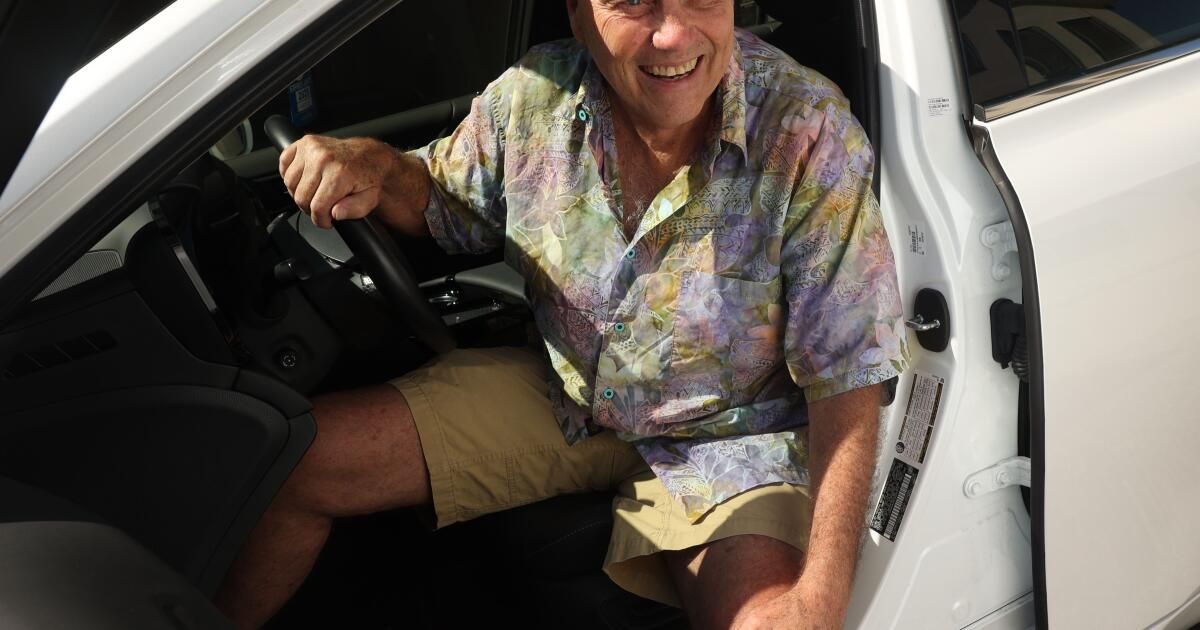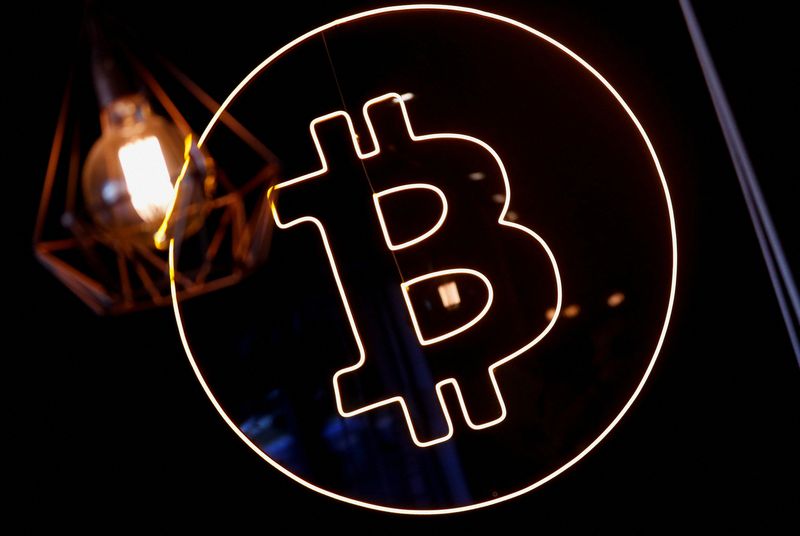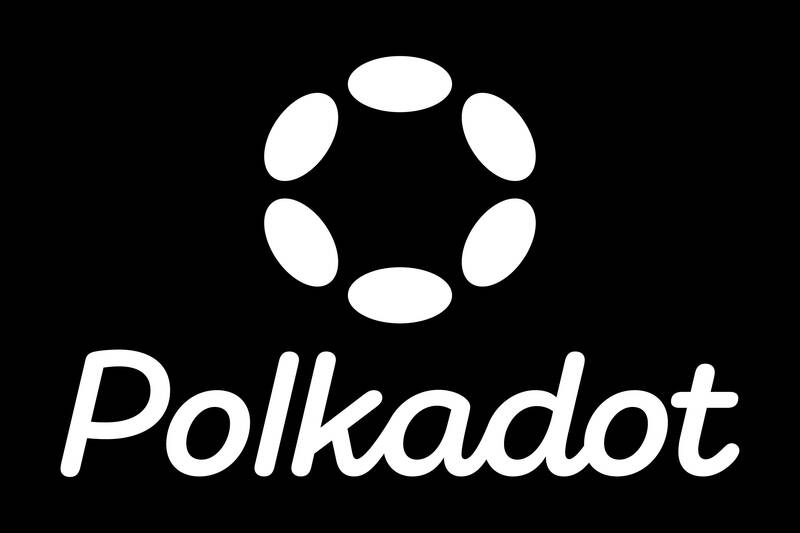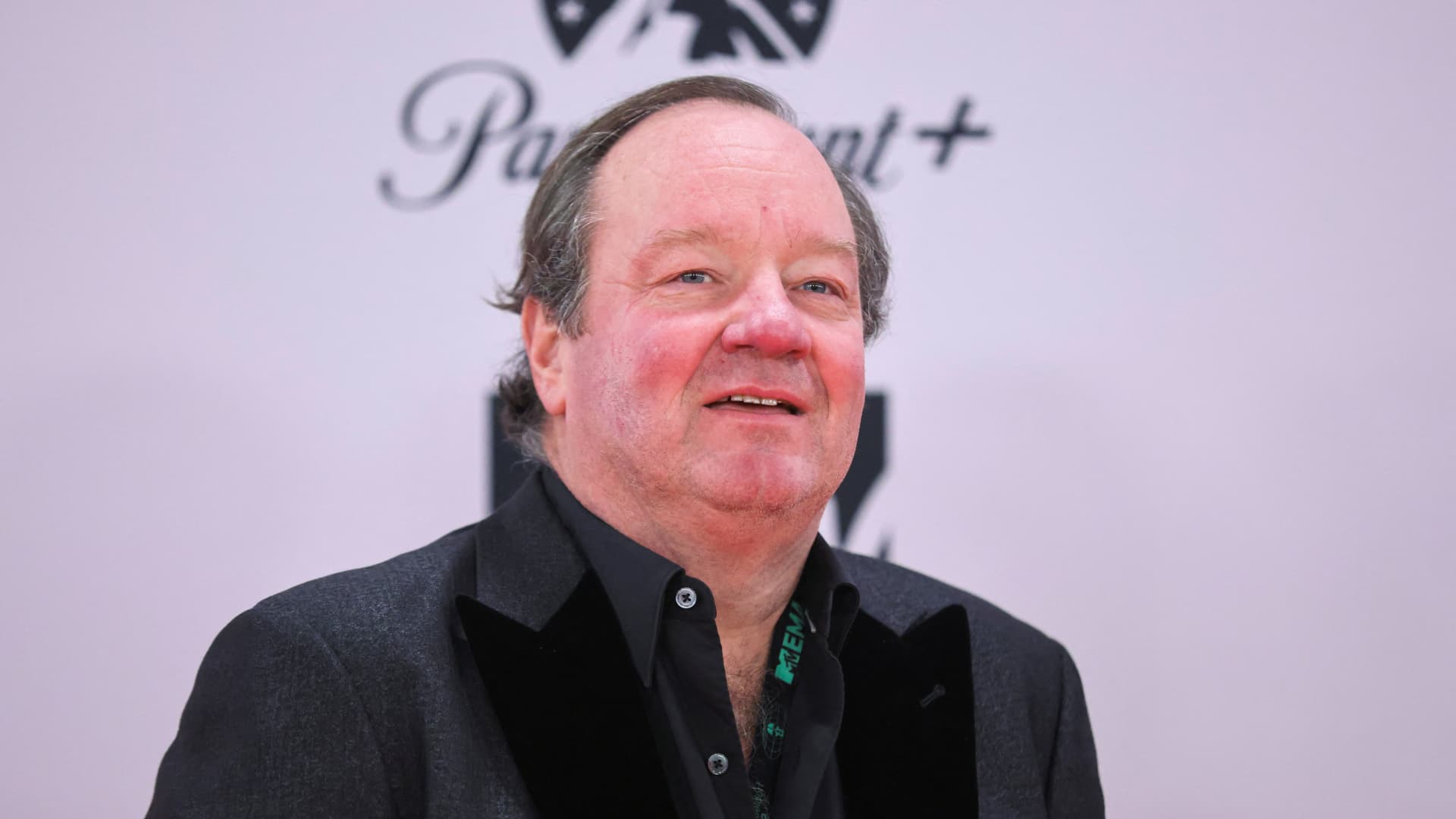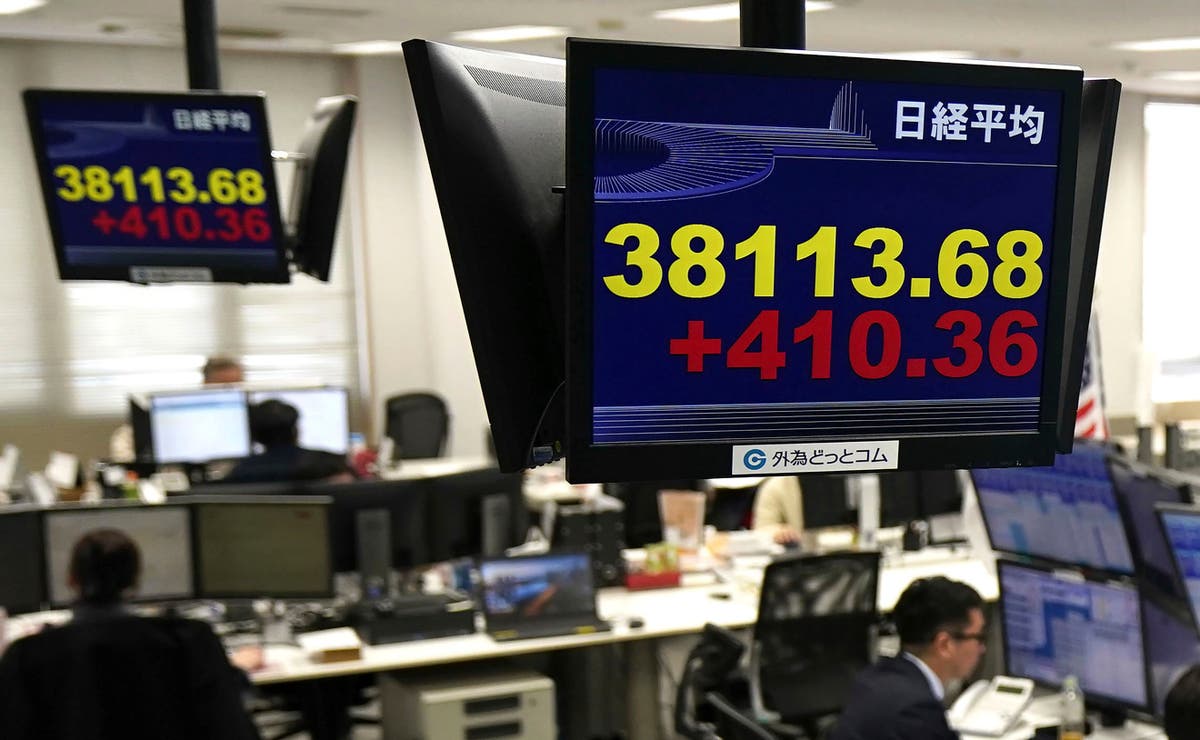When he first bought his Toyota Mirai in 2022, Ryan Kiskis was a happy man. He loved the idea of applying cutting-edge hydrogen fuel cell technology to environmental awareness.
“It's a great car,” he said. “I'm an engineer by training, I'm a big car enthusiast and I felt like the world was finally catching up with what we need to do” to reduce greenhouse gases.
Then reality crashed into us.
Aggressive and shocking reports on climate change, the environment, health and science.
He soon realized that hydrogen refueling stations are few and far between and unreliable. He learned that apps to identify broken stations spread misinformation. He learned that the state of California, which is funding the station construction, is way behind schedule: 200 stations were supposed to be up and running by 2025, but only 54 exist. And since Kiskis bought his car, the price of hydrogen has more than doubled and is now equivalent to $15 a gallon of gasoline.
Because gas is so expensive and gas stations so unreliable, Kiskis, who lives in Pacific Palisades and works at Google in Playa Vista, drives a gas-powered Jeep for all but short trips around the neighborhood.
“I have a great car parked in the driveway,” he said.
Bryan Caluwe can relate. The Santa Monica retiree bought a Mirai in 2022. He likes his car, too. “But it’s been a complete inconvenience.” Hydrogen stations “are either idle for mechanical reasons, or they’ve run out of fuel, or, in Shell’s case, they’ve just shut the door and gone home.”
And let's not even talk about Irving Alden. He owns a commercial printing business in North Hollywood and rents out a Mirai. He loves the car, too. But what about the refueling system? “It's a fucking joke.”
The three are part of a class-action lawsuit filed in July against Toyota. They claim Toyota salespeople misled them about the sorry state of California’s hydrogen refueling system. “They were told that the stations were convenient and available,” said attorney Nilofar Nouri of Beverly Hills Trial Attorneys. “That turned out to be far from the truth.” The class-action lawsuit now numbers two dozen plaintiffs and continues to grow, Nouri said. “We have thousands of these people in California who are stuck with this vehicle.”
Kiskis believes he was misled by Toyota sales staff, but says, “I'm equally irritated with the state of California” for poor oversight of the program it is funding.
Toyota told The Times that it is “committed to customer satisfaction and will continue to evaluate how we can best serve our customers. We will respond to the allegations in this lawsuit in the appropriate forum.”
Hyundai also sells a fuel cell car in California called the Nexo, and while the lawsuit is aimed solely at Toyota, the hydrogen fueling station situation affects Hyundai as well. Hyundai said it “shares concerns about the current state of hydrogen fueling infrastructure in California” and that “we are also working closely with government agencies such as the California Energy Commission, which provided the majority of the funding for public fueling stations.”
It’s more bad news for California’s political leaders’ attempts to make the state carbon neutral by 2045. Zero-emission vehicles are key to that goal, but the state is already struggling with a botched rollout of public charging stations. The top reason car buyers give for not considering EVs is the lack of availability of public chargers, according to a recent J.D. Power market survey, which found that “concerns about public charging infrastructure are only getting worse.”
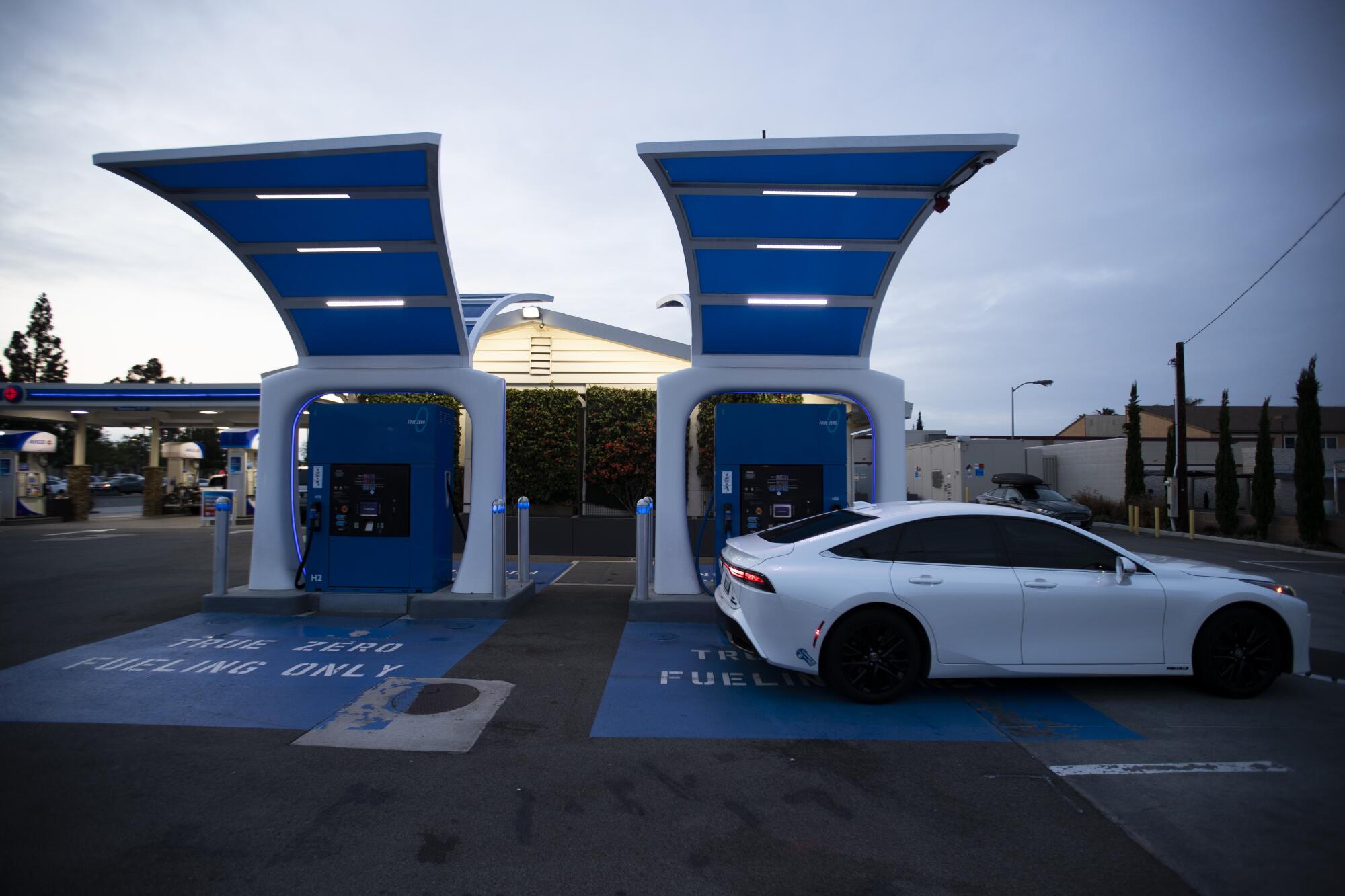
A Toyota Mirai refuels at a True Zero hydrogen station in Fountain Valley.
(Allen J. Schaben/Los Angeles Times)
Fuel cell vehicles are a key pillar of the state’s decarbonization plan. The California Air Resources Board has projected that more than 10% of new vehicles sold in 2035 will be fuel cell vehicles, rising to more than 20% annually by 2045. That’s a lot of vehicles: 1.78 million new vehicles were sold in California last year.
Since the growth of hydrogen stations has stagnated and hydrogen prices have skyrocketed, fuel cell sales have also stagnated. In the first half of 2023, 1,765 of these vehicles were sold or leased. In the first half of this year: 298.
Owners rarely complain about their cars. It’s the hydrogen refueling system that gives them trouble. As of 2006, 20 hydrogen stations had been installed in California. Today, more than $260 million in state money later, there are 54. They are clustered in the greater Los Angeles area and the Bay Area, with a single station in between, along Interstate 5 in Harris Ranch. (Once, after finding the Harris Ranch station closed on his way back to Los Angeles, Caluwe said he nearly ran out of fuel and had to be towed through the Grapevine.)
Who built the hydrogen stations in California? Not the automakers. Just as they didn't build the nation's gas station system, they aren't building the hydrogen system either. That falls to hydrogen station operators Iwatani, Air Products and True Zero, which is owned by FirstElement Fuel.
The state money given to those companies comes from transportation fees paid by California vehicle owners and revenue generated by the state's carbon credit market. The gas station companies contributed some of their own money, but most of the money was paid by the state.
1
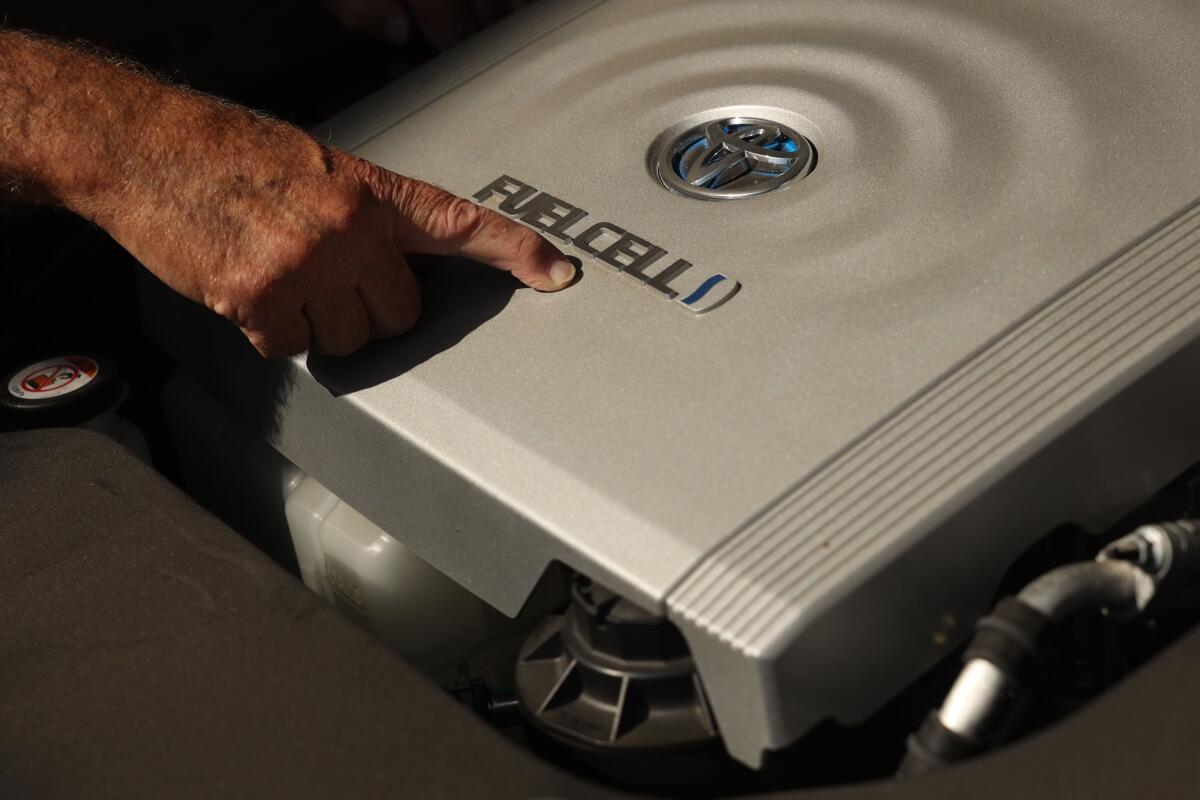
2
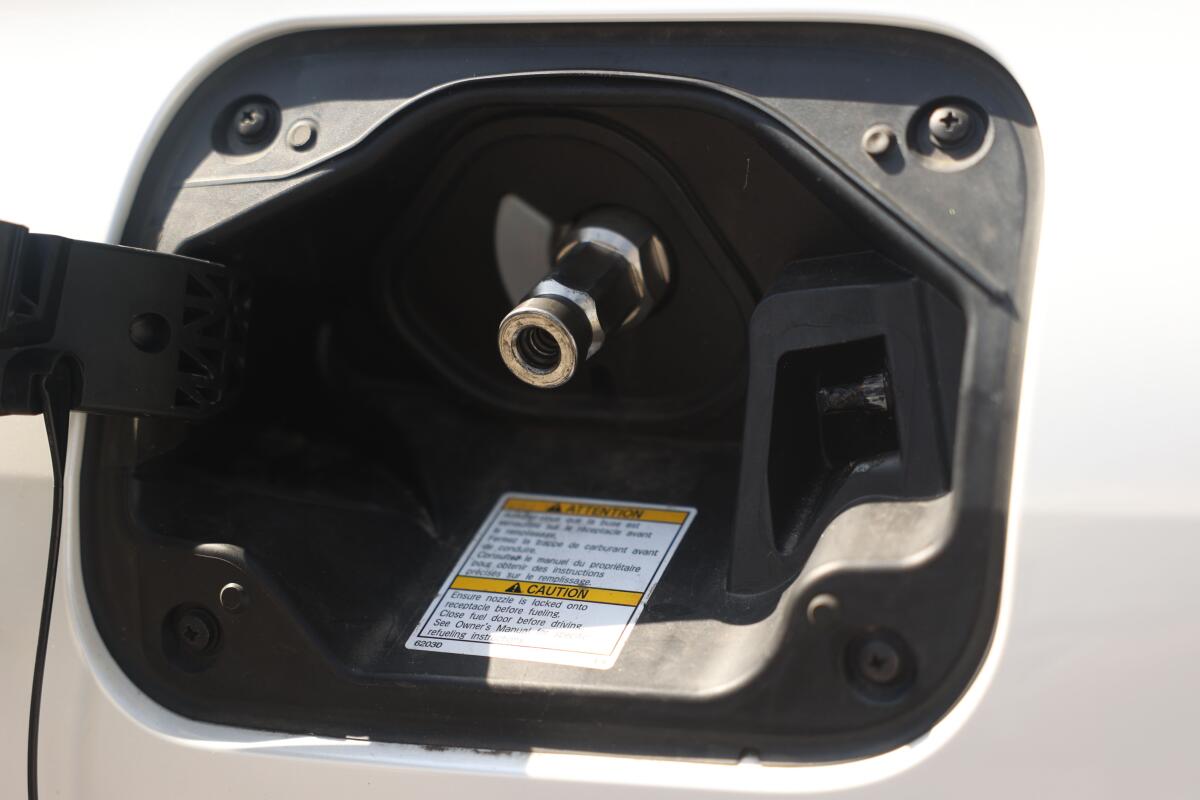
1. Fuel cell cars work by combining hydrogen fuel with oxygen from the air to generate electricity, which powers an electric motor that makes the car move. 2. Refueling a hydrogen fuel cell car is more like filling up at a gas station than recharging an electric vehicle. (Michael Blackshire/Los Angeles Times)
Fuel cell cars are a pillar of the state’s ambitious climate goals. Like battery-electric cars, they emit no greenhouse gases. Basically, here’s how they work: The fuel cell combines hydrogen fuel with oxygen from the air to create electricity, which in turn powers an electric motor that turns the car’s wheels. Although hydrogen fuel is produced by methods ranging from clean to dirty, the only emission from the cars themselves is water vapor.
Although battery-powered electric cars are much more popular, fuel cell vehicles have some advantages. The range on a full tank is between 560 and 640 kilometres. Refuelling usually takes no more than five to ten minutes, compared to much longer waits at public EV charging stations.
Unlike electric vehicles, however, you cannot refuel at home, but instead have to travel to a specific service station. The state had planned to install almost 200 stations so far, but only a quarter of them are installed and (sometimes) working.
To date, nearly 18,000 fuel-cell cars have been purchased or leased in California. Since 2020, more than 10,000 fuel-cell cars have been registered and on California roads. In those years, the net number of available hydrogen stations has increased by just two. (One California station operator exited the market earlier this year: International oil giant Shell had installed seven hydrogen stations in California and had more on the way, but earlier this year it closed them and repaid more than $40 million in state subsidies.)
So far, the state's 54 hydrogen stations have cost Californians nearly $5 million each.
It wasn't supposed to be this way. Former Gov. Arnold Schwarzenegger promoted the idea of hydrogen cars in his first term. The state began subsidizing the purchase of fuel cell cars. Under Gov. Jerry Brown, 200 state-subsidized stations were planned, after which, it was claimed, the free market would take over and hydrogen stations would proliferate.
“More cars would mean more retail demand [stations]“Retail would attract more cars, in a virtuous cycle,” said state Sen. Josh Newman (D-Fullerton), a Mirai owner.
The California Energy Commission is in charge of funding hydrogen stations. The commission, Newman said, “has failed to meet funding levels that would maintain that balance.”
While he's not disputing the class-action plaintiffs' accounts, Newman said, “I think Toyota has been mistreated as much as anybody.” Toyota and Hyundai (and, for a few years, Honda) relied on robust station building to spur sales.
Automakers offer new fuel cell owners a debit card worth $15,000 in fuel, Newman said, another big incentive to switch to hydrogen. But sharply rising hydrogen prices have cut the value of the benefit by more than half, Caluwe said.
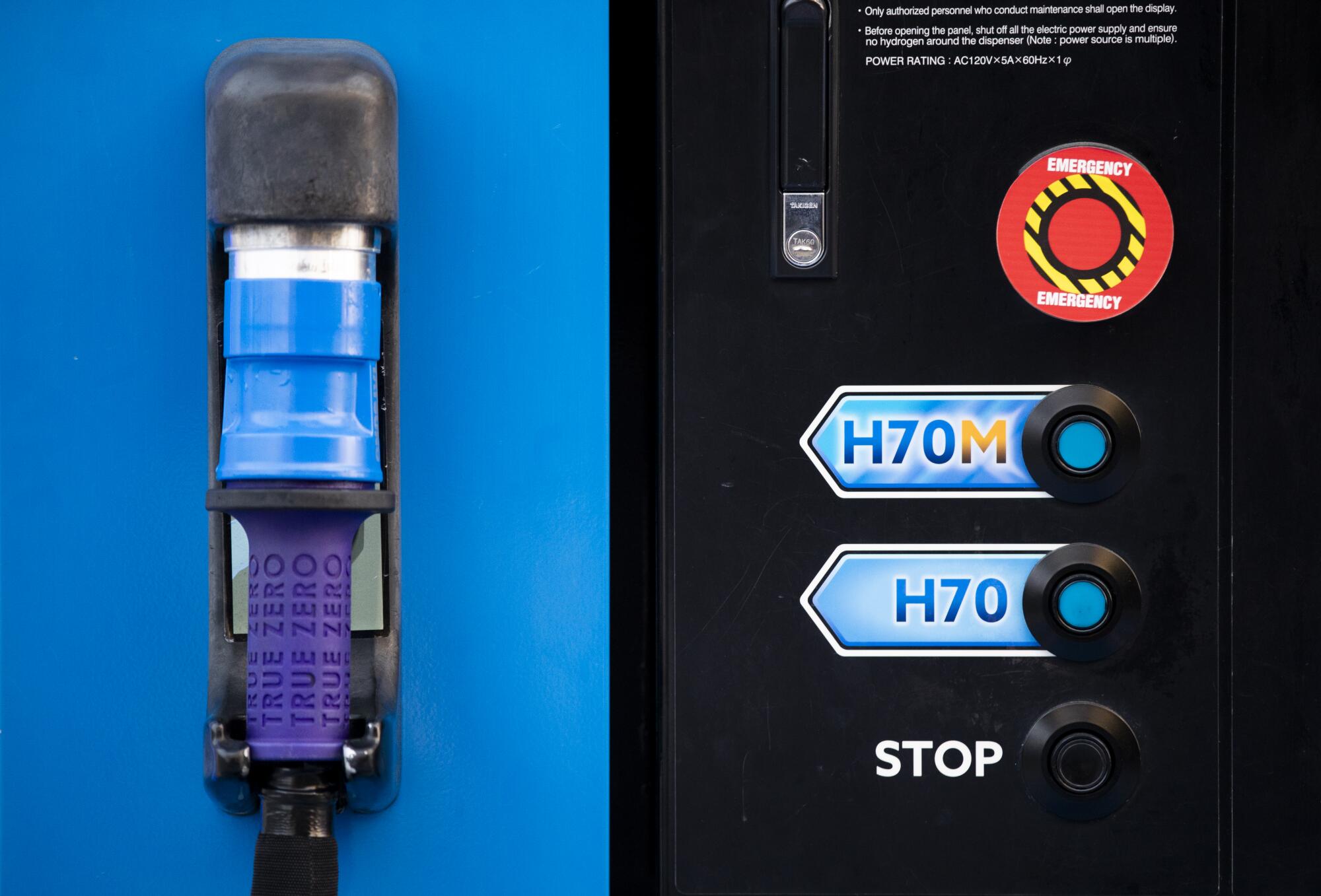
Pump nozzle and push buttons on a True Zero hydrogen dispenser.
(Allen J. Schaben/Los Angeles Times)
The energy commission declined interview requests from Chairman David Hoschild or Commissioner Patty Monahan. In a prepared statement, the commission said improving the reliability and performance of hydrogen stations is “a current priority.” In addition, the commission “will continue to monitor the market and make informed decisions for both electric and hydrogen infrastructure. In making those decisions, the commission will continue to monitor the market and make informed decisions for both electric and hydrogen infrastructure. [commission] It will continue to conduct analysis and publish reports. [and] “Monitor vehicle model availability and customer acceptance and private market interest to build and invest in hydrogen stations.”
Earlier this year, the energy commission awarded an additional $9.4 million to FirstElement and Itawani for operations and maintenance at the companies’ stations. (Those companies did not respond to requests for comment.)
Unlike previous grants, these require 95% uptime. The commission has not yet defined how that 95% figure will be determined and has not detailed the consequences if the requirement is not met.

